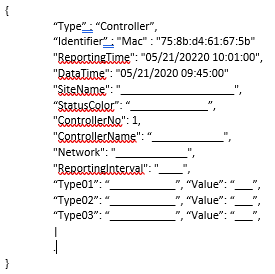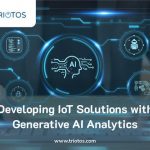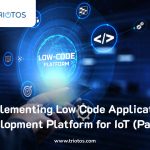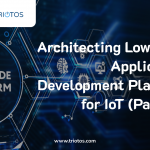
One of the challenges in developing complete IoT solutions is the time it takes before you have real live relevant data from a large number of deployed IoT devices. As developing the IoT device ‘the Thing’ often has the longest lead time (12-18 months before full deployment) it can be difficult to develop the rest of the solution (data models, connectivity, data handling, data processing, storage, analytics, machine learning, web and mobile applications, integrations, operations and deployment) so that everything is ready at the same time. Thankfully, there is a way to address this – it is called Data Model Simulation. Before we discuss the simulation part, let us go through what has to be done ahead of time.
Getting Started – Data Models, Data Items, Descriptions, Contextual Information and JSON Object
A Data Model is a critical part of any IoT solution. It is the detailed description of how each type of data is described within an IoT solution. Put differently, it is the taxonomy that describes all aspects of data and information as they exist within the solution. It ranges from temperature, acceleration, location, time, metrics to descriptive data presented as names, locations, ZIP codes, states etc. A data model can have 100’s of variables or a few. At the start of an IoT project, it is therefore important to create a list of all data that will be handled within the application. It does not have to be complete (it can be evolved over time), but it must include all Data Items that will be used for the initial pilot project.
Within an IoT implementation, each Data Item is defined, coded and stored in a way so that they are 100% understandable and identifiable at any time – they need to be contextual and have a Description that explains what they are. This description is often made up of several Data Items – “Type”:”Controller”, “Reporting Time”:” 02/02/2021 10:01:00″, “Site Name”:”Niagra”,”Temperature”:”65”, etc. Given the importance of time, IoT data is often handled and stored as Time Series Data and each data item is delivered with the appropriate Contextual Information. Once a Data Model and Data Item definition and formatting has been selected, the next step is to decide how data items are sent from/to IoT ‘Things’ and through the plumbing (see this blog) to the Data Handling Platform (cloud or enterprise based) and from there to data processing and user applications. The approach used has to contain Data Items, Descriptions as well as the Contextual Information.

While there are many ways of doing this, a compact general format often used is JSON (JavaScript Object Notation), a light-weight data-interchange format that is easy for humans to create and understand and easy for computers and devices to generate and parse. In its simplest structure a JSON Object is a collection of name/value pairs like “Site Name”:”Niagra” separated by commas. The object is surrounded by simple separation symbols, { and } creating a simple to define and use {JSON object}. A simple IoT solution can have a few JSON objects associated with specific devices. More complex IoT solutions have many different JSON objects sharing a well-designed Data Model with shared sets of Data items, Descriptions and Contextual Information.
Part 2 of this blog will describe a cloud-based Data Model that we use to speed up IoT Solution Development in the cloud but also integrating embedded computing IoT devices speeding up integration. At Triotos, we focus on providing IoT solutions that meet your needs. Using ready built reference solutions and products we can deliver the IoT you need in months instead of years and for <$100k instead of $ millions. To find out more, go to www.triotos.com.







